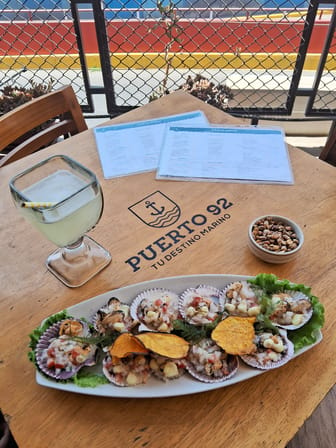Lake Titicaca: The EXTENSIVE Guide
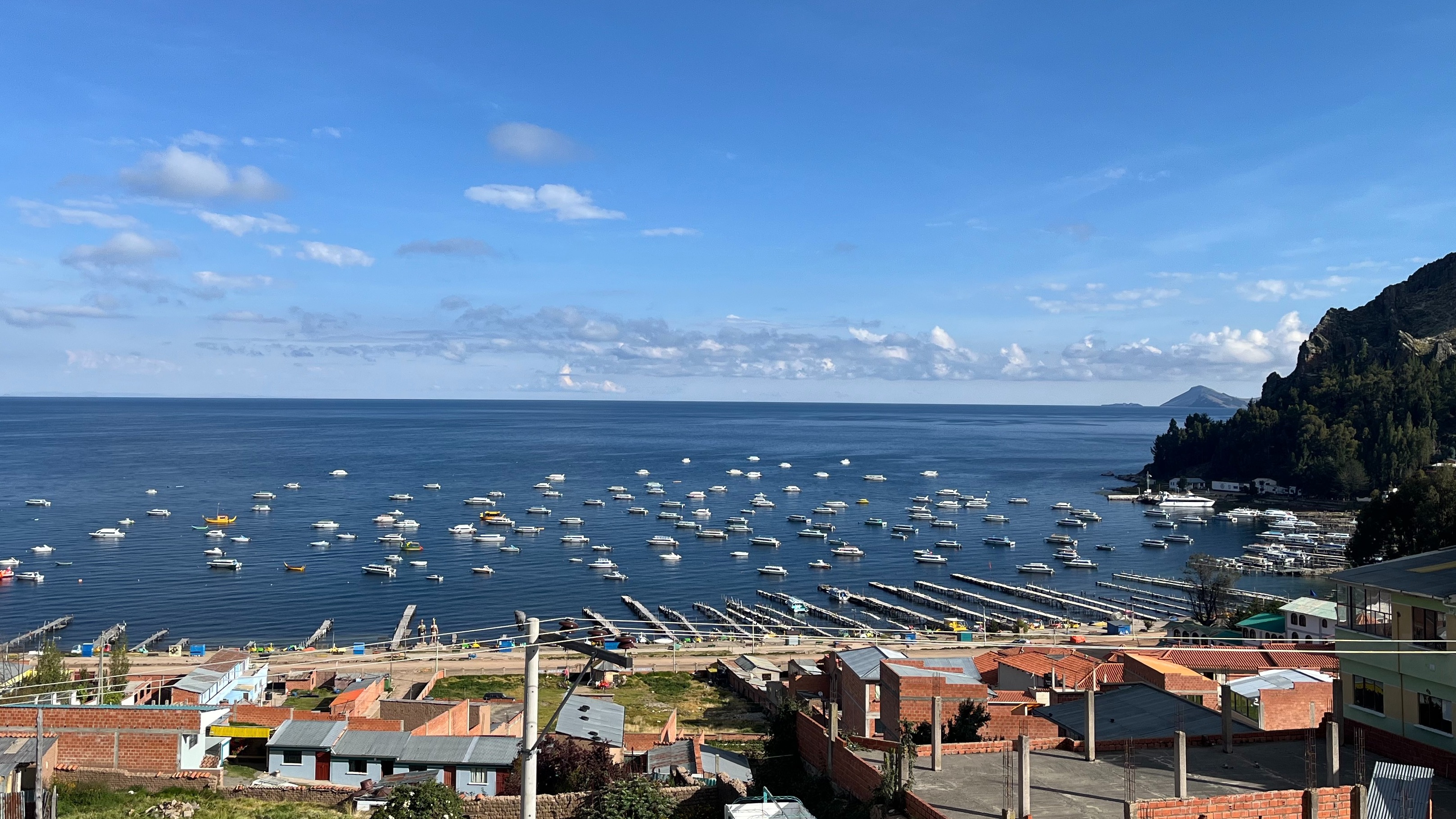
A Bit About Lake Titicaca
The lake is a UNESCO World Heritage Site, making it a cultural attraction, and a big spot among tourists.
But what makes Lake Titicaca and the surrounding areas truly special? Its people, of course. The people here take pride in their communities and culture, you will see this in their well-known handmade textiles and their farm-to-table meals.
I've explored both the Peruvian and Bolivian sides of the lake and while each side definitely has its own vibe, they both offer a great experience for tourists.
Most people experience Lake Titicaca with a tour. But, I'm showing you how you can make the best of your trip on your own time.
How to Use This Guide
Let’s be real, planning a trip can feel overwhelming. Hours of Googling, sifting through conflicting advice and wondering if you’re missing out on something amazing.
Sound familiar? That’s where this guide comes in.
I’ve done the heavy lifting for you. Not only have I spent hours researching, but I’ve also explored Lake Titicaca firsthand.
This guide is packed with my recommendations, insider tips, and everything you need to plan an unforgettable trip WITHOUT the stress.
1. Recommendations
We’ll kick things off with a curated list of the best things to do and see around Lake Titicaca. Whether you’re into history, culture, or just soaking up stunning views, I’ve got you covered.
2. Transportation Guide
Getting to and around Lake Titicaca doesn’t have to be confusing. I’ll break down your options so you can travel like a pro.
3. Local Food Recommendations
4. Tips
5. Best Places to Stay
Whether you’re on a shoestring budget or looking to splurge, I’ve sorted accommodations into Budget, Mid-Tier, and Luxury options.
6. Itineraries
To wrap it all up, I’ve created 2-day and 3-day itineraries to help you make the most of your time.
By the time you finish this guide, I hope you feel confident, prepared, and excited for your Lake Titicaca adventure.
Let’s get started!
And if you want a personalized plan? Let’s chat! I offer one-on-one calls to create a trip tailored just for you.
What to do in Lake Titicaca?
Bolivian Side of the Island
The Bolivian side of Lake Titicaca is rich in culture, history, and natural beauty.
Here’s a comprehensive list of things to do and see, in Copacabana and beyond:
Places to Go
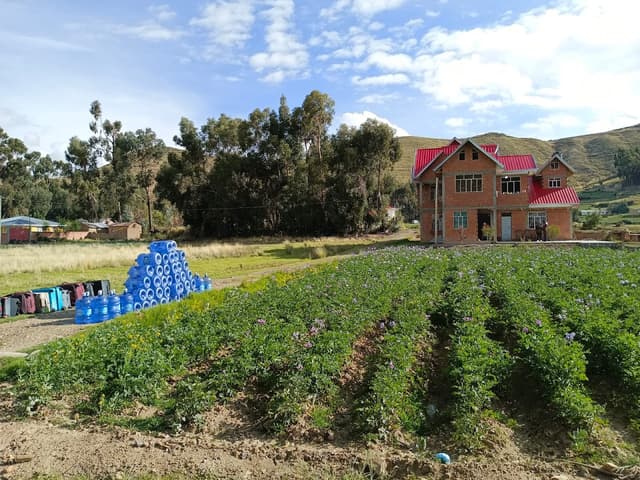
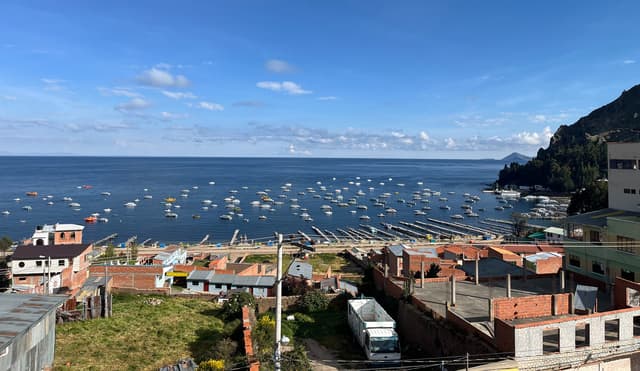
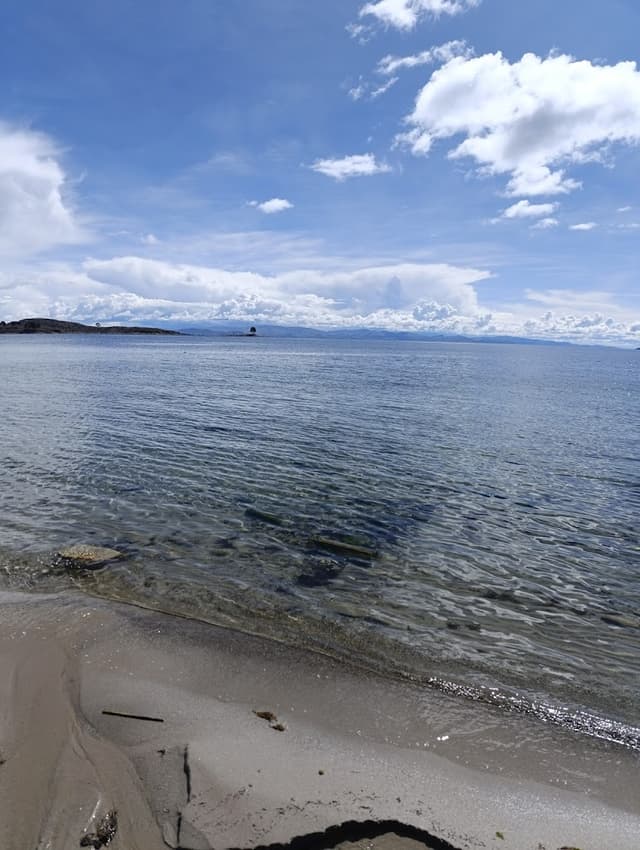
Things to Do & See in Copacabana
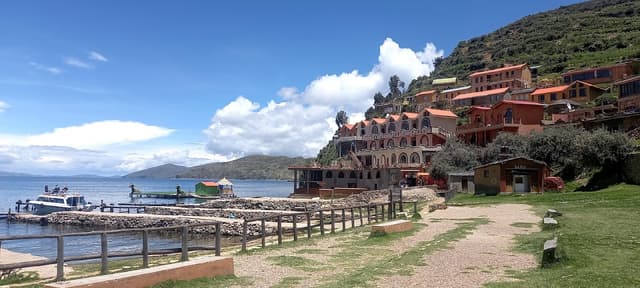
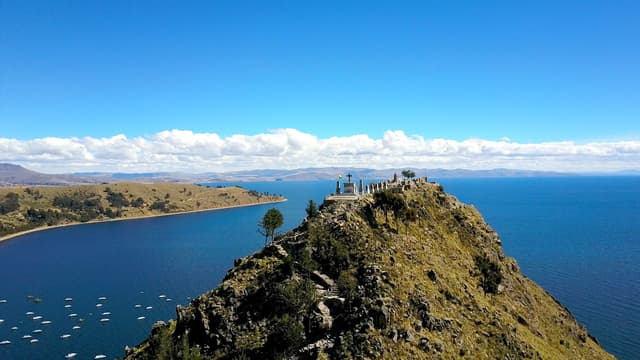
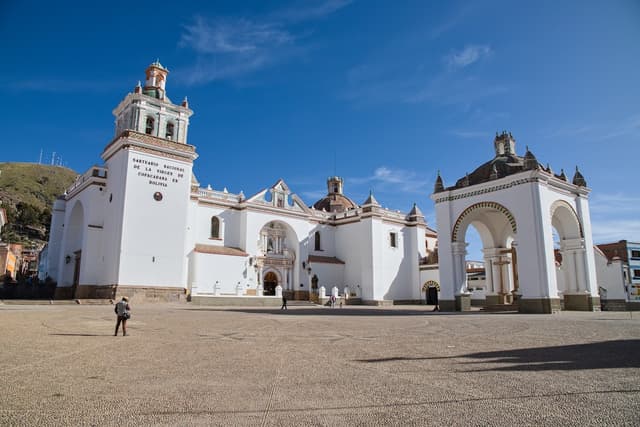
Things to Do and See Outside of Copacabana
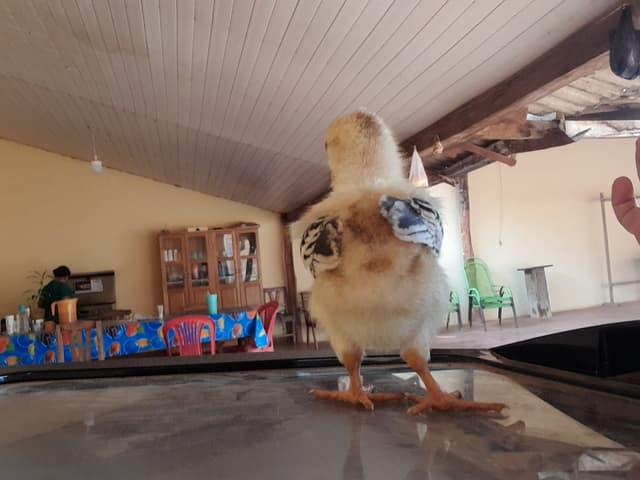
Places to Eat in Copacabana
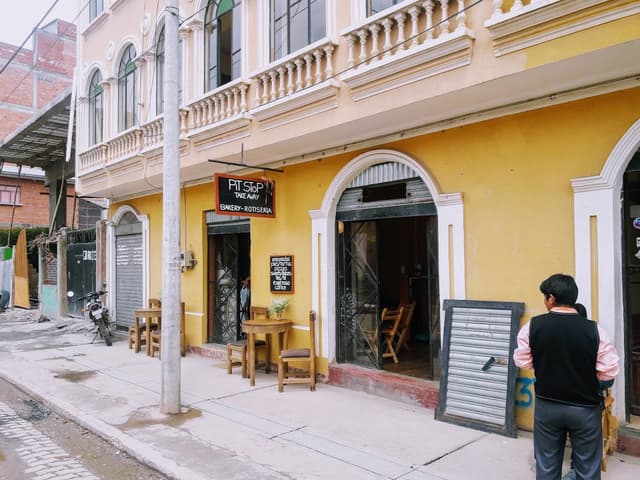
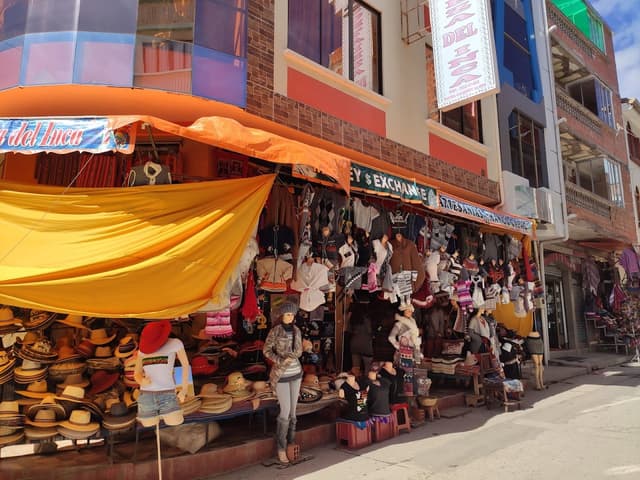
Peruvian Side of the Island
Get to know the local communities and definitely don't forget to EAT, EAT, EAT!
Places to Go
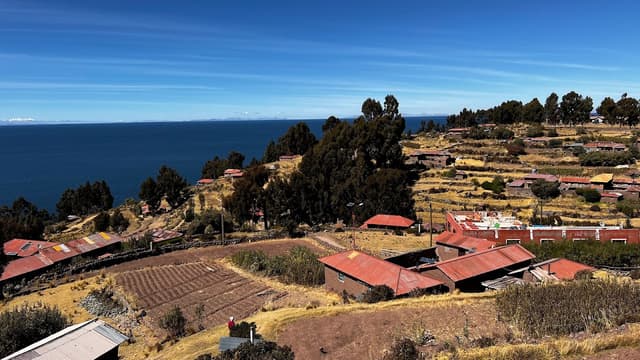
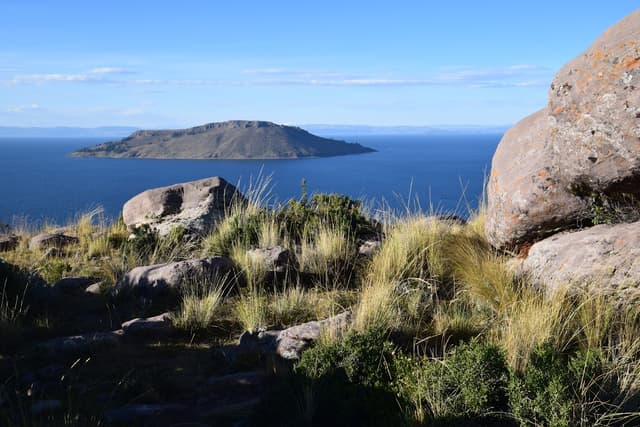
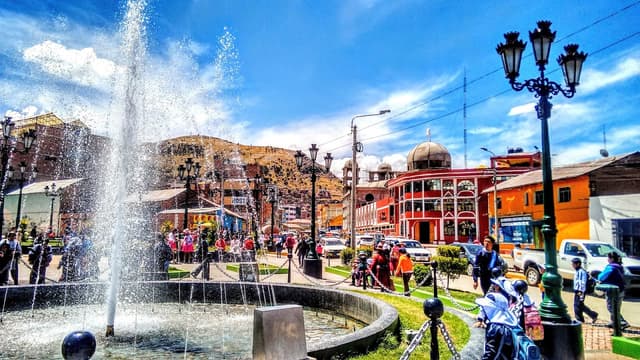
Things to Do & See
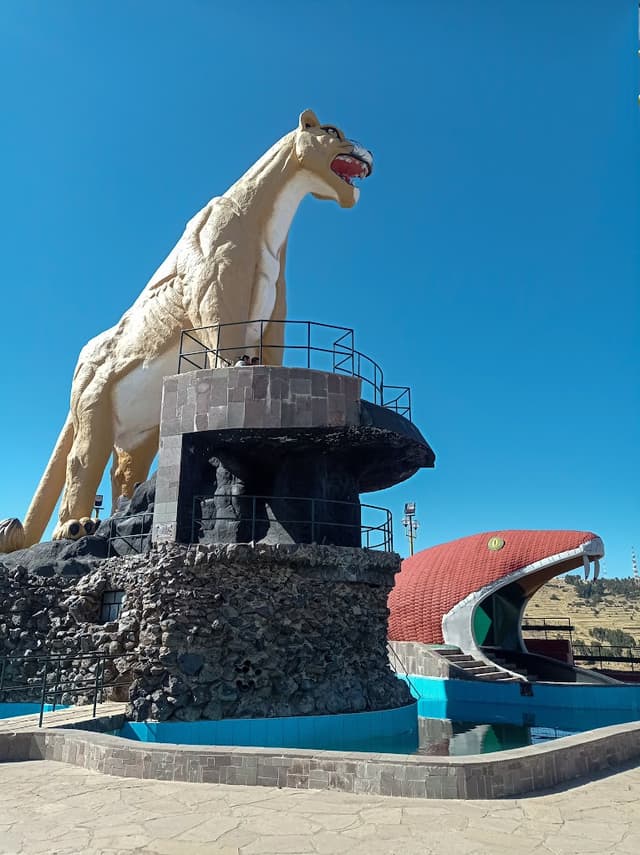
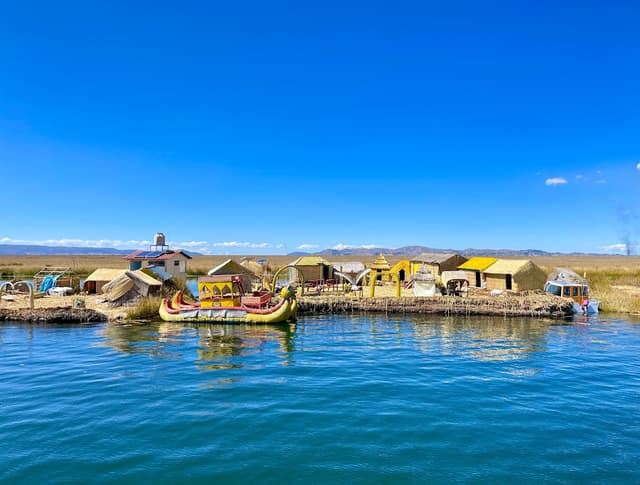
Places to Eat in Puno
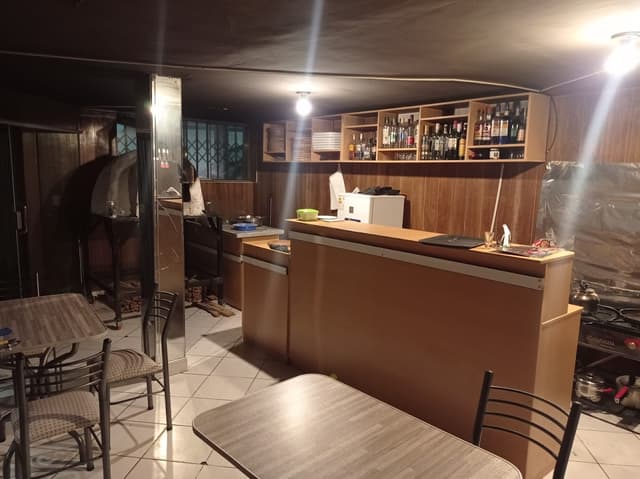
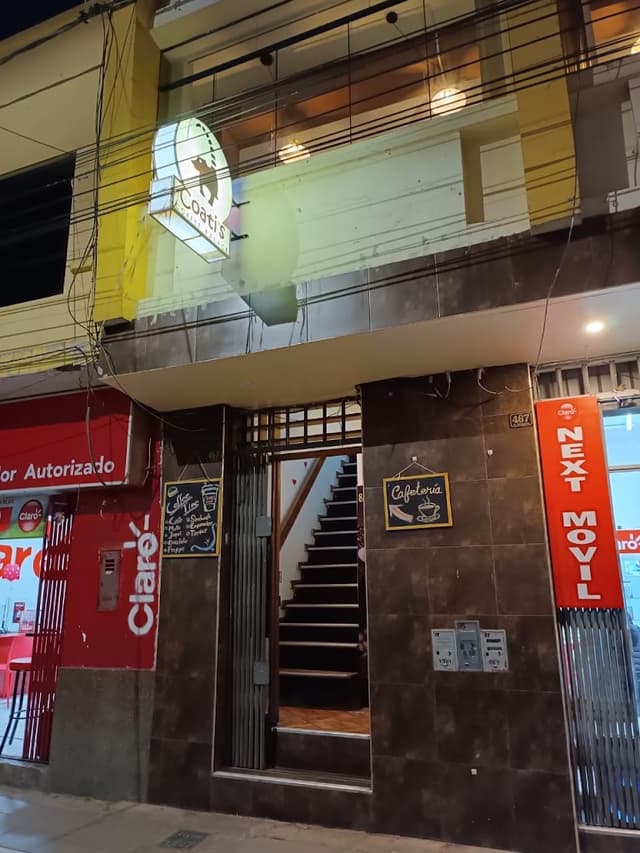
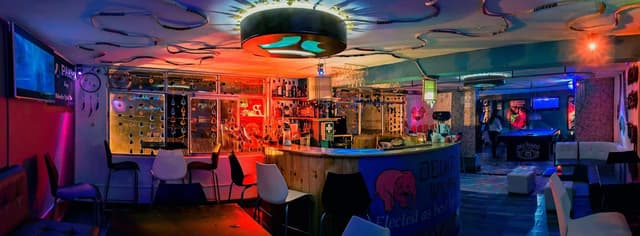
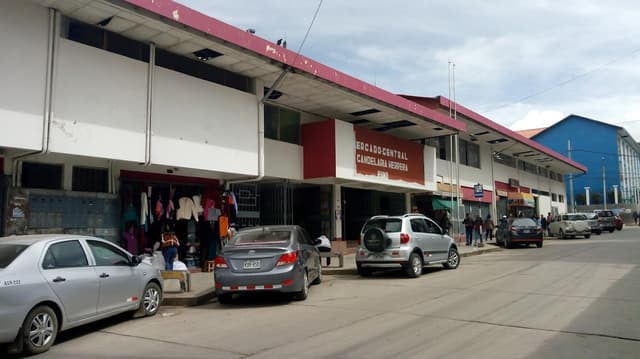
Transportation Guide
There's tons of options when it comes to Transportation. But here's a high-level overview to get you in the know.
Let's start with the Peruvian Side:
If you're going from Arequipa or Cusco --> Puno, you can take a local bus for ~45 soles.
Now when you're in Puno, you can use tuktuks to get around the city, or get collectivos if you're trying to get to the smaller pueblos.
Puno
It'll help you to know that Puno has two terminals
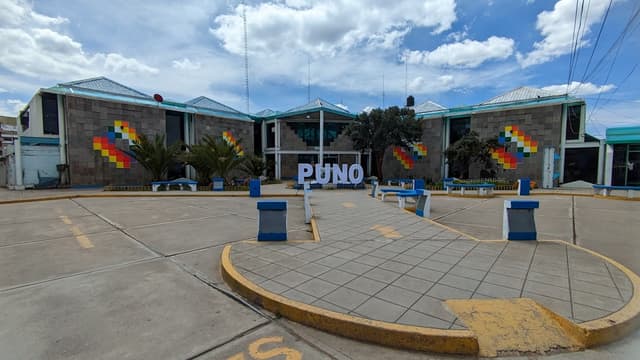
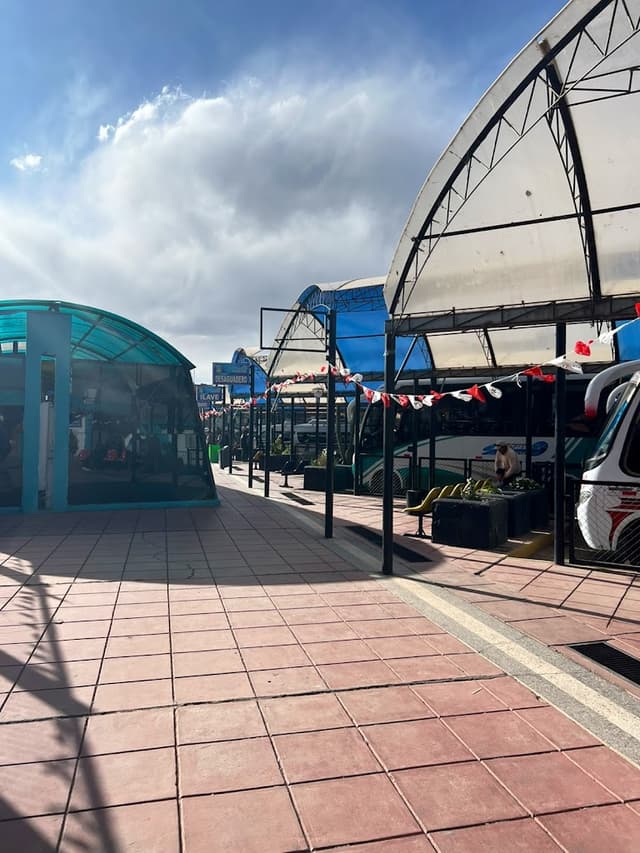
On the Bolivia side:
Traveling from La Paz --> Copacabana takes about 4 hours in bus. And there are buses that leave everyday between 7 & 8AM, you'll be able to get a local bus at the terminal for ~$10-15.
Similarly to in Puno, you have the option to take collectivos, or minivans, to the smaller pueblos in the area .
Going to the Islands:
Leaving the ports in each place, you will see people selling tickets to eat on the island. There are both local boats and tourist boats to choose from. The local boats might make an extra stop or two.
Want to get off the beaten path? There are many little pueblos located around the island. Minibuses are the best way to get to these places and usually cost anywhere from $2-5. Depending on the distance of course.
TukTuks:
In both copacabana and Puno you will have the option to travel in tuktuk. This is usually a cheaper option to taxis.
What to Eat
The food in the Bolivia-side of the lake and the Peruvian-side of the lake are quite distinct. But the Lake is known for their trout or "trucha" so I definitely recommend giving it a try on both sides.
Peruvian Side (Puno Region)
Trucha Frita (Fried Trout)
Freshly caught trout from Lake Titicaca, usually fried or grilled and served with rice, potatoes, and a side of salad.
Where to try: Family homestays in Llachón or local eateries in Puno's Mercado Central.
Chairo Soup
A hearty Andean soup made with lamb, potatoes, chuño (freeze-dried potatoes), and local herbs. It’s a favorite in the cold altiplano climate.
Where to try: Traditional kitchens in Puno or Taquile Island.
Ceviche de Trucha (Trout Ceviche)
A Peruvian twist on the national ceviche dish, made with fresh trout marinated in lime juice, onions, and spices.
Where to try: Mid-range Puno restaurants like Mojsa or La Casona.
Quinoa-Based Dishes
The Puno region is a major producer of quinoa. Look for quinoa soup, quinoa risotto, or bread made with quinoa flour.
Where to try: Any market or local household, especially in Taquile Island.
Choclo con Queso (Corn with Cheese)
Boiled giant Andean corn served with a slice of salty cheese. A popular snack while exploring.
Where to find: Street vendors near Puno’s port or main square.
Bolivian Side (Copacabana Region)
Ispi (Small Fried Fish)
These tiny lake fish are fried whole, typically served with boiled potatoes and salad.
Where to try: Local restaurants in Copacabana or from vendors near the port.
Plato Paceño (La Paz-style Plate)
A classic Bolivian meal featuring boiled potatoes, Andean corn, fava beans, and fried cheese. Often served with llajwa (spicy tomato salsa).
Where to try: Found in traditional restaurants across Copacabana and Isla del Sol.
Api Morado (Purple Corn Drink)
A hot, sweet drink made from purple corn, cinnamon, and sugar. Perfect for chilly mornings by the lake.
Where to try: Street vendors in Copacabana’s main square.
Quinoa Empanadas
These fried or baked turnovers are filled with quinoa, cheese, and occasionally vegetables or meat.
Where to Try: Bakeries or street vendors in Copacabana.
P’esque de quinoa
A creamy quinoa porridge-like dish cooked with milk and sometimes served with cheese or sugar. Traditionally eaten as breakfast.
Where to try: Homestays on Isla del Sol or Santiago de Okola.
Trucha en Salsa de Ajo (Trout in Garlic Sauce)
A flavorful twist on trout dishes, combining fresh fish with a garlic-infused cream sauce. Anywhere around the island, is known for trout.
Where to try: The main street of Copacabana near the port.
Places to Stay
Copacabana, Bolivia
Luxury
There are a lot of great places to stay on the Lake with beautiful views and nice rooms, but these hotels will make you feel like you have a bit more luxury.
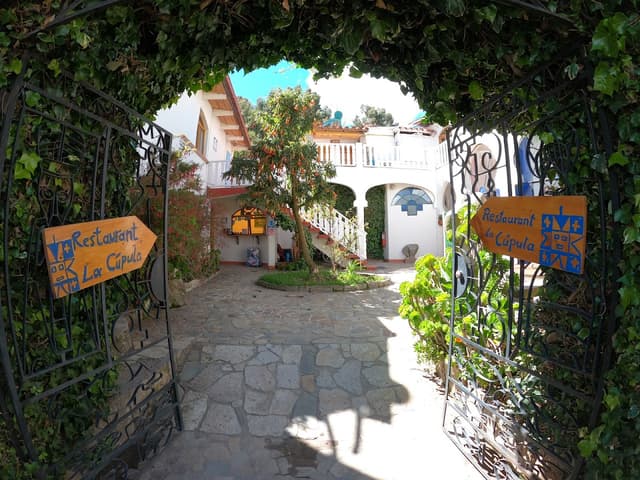
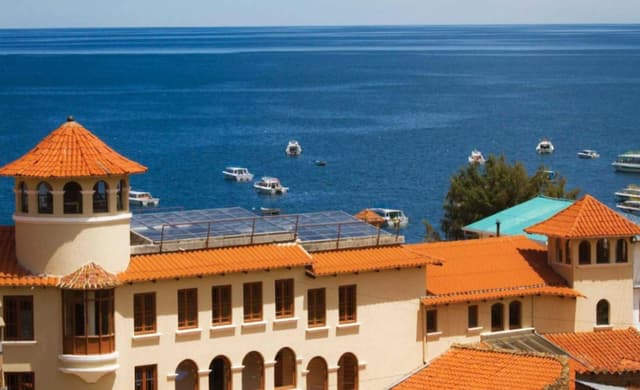
Mid-Tier
These places are great if you want privacay, and a bit more comfort--without breaking the bank.
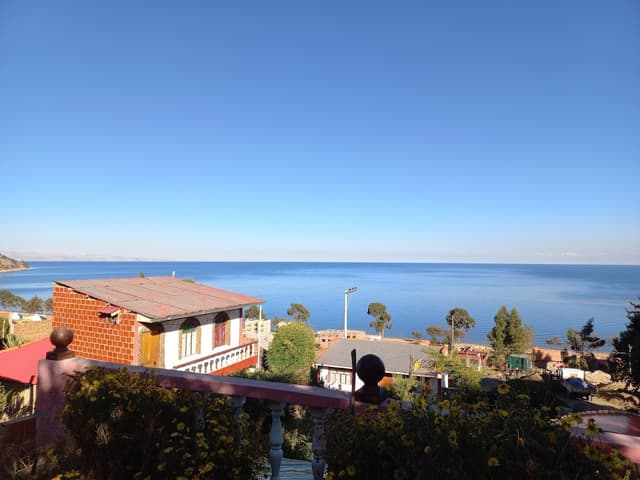
Budget
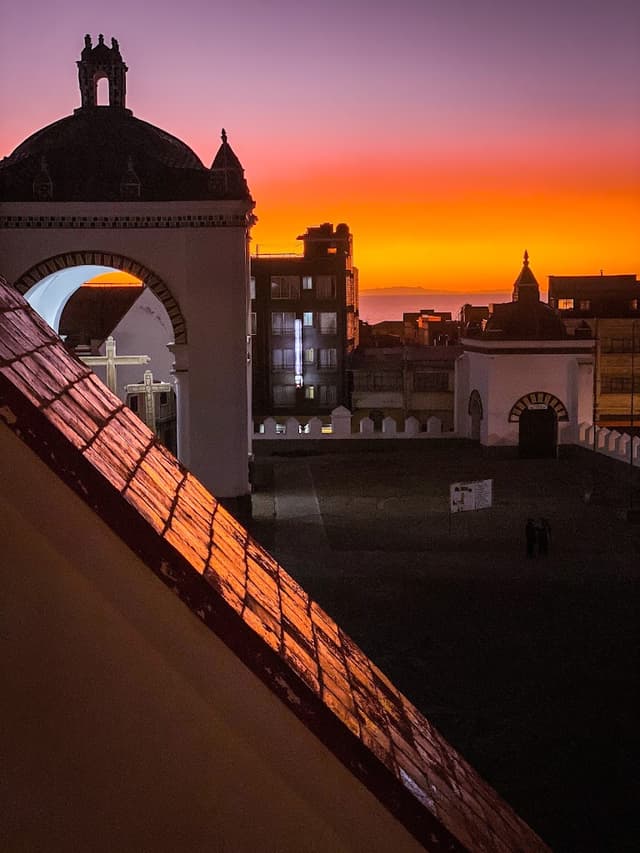

Puno, Peru
Luxury
Get the most out of your experience with these comfortable options nearby the city of Puno.
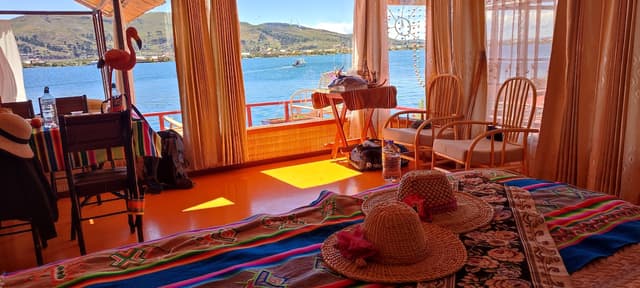
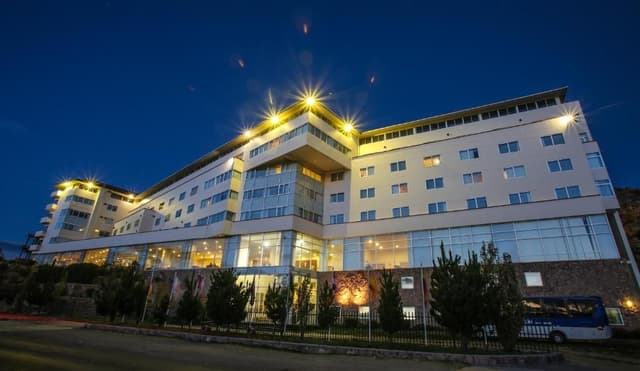
Mid-Tier
Great if you're traveling as a couple or are just looking for a bit of extra comfort.
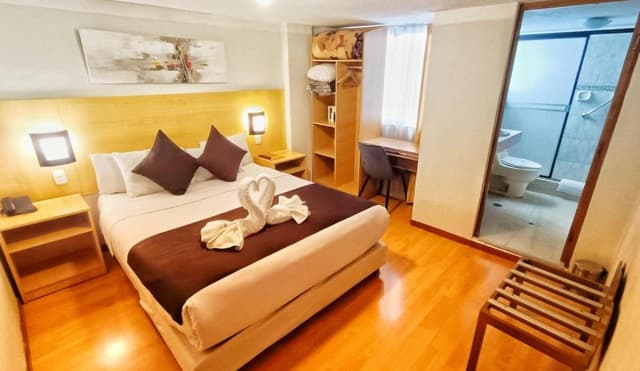
Budget
Homestays in Taquile are pretty budget-friendly. But if you're looking to save money and get a dorm. There are budget-friendly hostels in Puno.
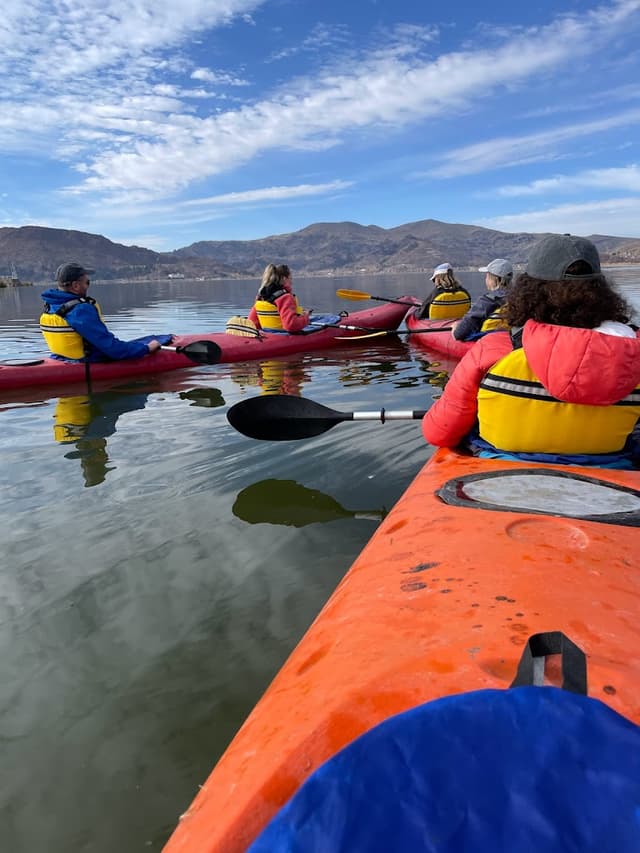
Tips
Best Time to Visit
The dry season is technically June, July, and August. But anytime between May - September is a good time to visit.
Altitude Sickness
Located at 3,812m, if you haven't already acclimatized you might feel the effects. The number one advice to combat altitude sickness is to be sure to stay hydrated. You can also drink coca tea., which most hotels will offer. Or you can find coca leaves at the local market.
Locals in Bolivia will also tell you to "make sure your stomach is warm."
Border Crossing
Crossing the border is actually quite relaxed around Copacabana and Puno. The officers are used to tourists taking this route and you can basically walk right through.
Just be sure to get your stamp out of the first country (whether Bolivia or Puno) before entering the second country.
Exchanging Money
There are a lot of ways to exchange money. You can always exchange your money at the borders. Here you will see women sitting at small tables before or after crossing. It's always great to have USD on you if you can to get a better exchange rate.
You should know, that if you need to change Soles-->Bolivianos make sure to do that on the Peruvian side. If you want to change Bolivianos-->Soles do that on the Bolivian side.
To exchange money for Bolivianos in Copacabana, I recommend exchanging your money at the small stores (or minimarkets) that are located in the center of Copacabana.
In Puno, you will see a ton of money exchange houses. Each one usually offers a fair and similar rate.
Packing
The nights near Lake Titicaca are chilly all year round. Pack layers for warm sunny days.
Tipping
Tipping is usually not necessary or expected but at nice place you should expect to tip around 10%.
2-Day/1-Night Itinerary (Peru🇵🇪)
Puno, Peru & Taquile Homestay
My biggest advice when visiting Lake Titicaca is not to skip over Puno. Why? Well, it has a small town vibe but with all the conveniences of a city. I stayed in the city for a couple of says and didn't regret it.
But for this quick trip, we're going to prioritize my favorite homestay on Taquile Island!
Day 1: Exploring Uros and Sailing to Taquile
Morning
Make your way to Puno on day one to start your adventure.
7:30 am: Pick-up from your accommodation.
8:00 am: Boarding at the pier to head to Uros Island.
10:00 am: Arrival at Uros Island.
1:00 pm: Arrival at Taquile and welcome by a local family.
1:30 pm: Lunch with delicious homemade food.
Afternoon: Island exploration and traditional activities.
7:00 pm: Dinner under the stars.
7:30 pm: Possible nighttime activities or bonfire.
Day 2: Exploring Taquile and Return to Puno
Morning
Breakfast with breathtaking views followed by exploring Taquile’s beach or immersing in local life. Take a cold plunge in the Lake.
Afternoon
Time to walk around and explore the island.
2:00 pm: Return to Puno on scheduled return boat to Puno.
4:30 pm: Arrival in Puno.
Evening
Where you can stay to enjoy the food and a night out before heading to your next destination in the morning. Or, you can take an overnight bus to your next destination-- perhaps Cusco or Arequipa.
Want to stay at the same homestay as I did?
You can contact Huallata Experiences here: *and don't forget to tell them that Christina sent you😉
3-Day/2-Night Itinerary (Bolivia ➡️ Peru)
🇵🇪 & 🇧🇴 This itinerary is for people wanting to enjoy both the Bolivian & Peruvian sides of the lake.
Day 1: Copacabana & Isla del Sol
Morning
Arrive in Copacabana in the morning & check into your hostel. *Copacabana is about 4 hours from La Paz.*
Once you're settled into your hotel or hostel, you should have some time to walk around the main streets, visit the Basilica of our Lady Virgen Copacabana and go to the local market to get some breakfast.
Afternoon
Head to the port around noon to take a boat to eat lunch on Isla de Sol. On the "island", you can catch your own fish and wait for them to prepare your meal fresh for you.
*To Book This Tour: Go down to the harbor and talk to the people in the little huts. People usually start showing up around 12pm. Once they have a full boat, they'll take you to the island where you'll eat lunch and then get a boat ride back.*
When you get back from Isla de Sol or your lunch, you can hike the small mountain, Cerro El Calvario, to get a nice view of Lake Titicaca.
You can find a route on AllTrails here:
Night
Copcabana is honestly a quiet little town but they do have a small street that has restaurants for tourists at night. If you're looking for a cheap, local and delicious food experience you can grab dinner at one of the kiosks down by the water for some local food.
If you're looking for something a bit more luxurious, you'll want to skip the walk to the sunset view on the hill and head to Restaurante La Cúpula for a view and a higher-end experience in the city.
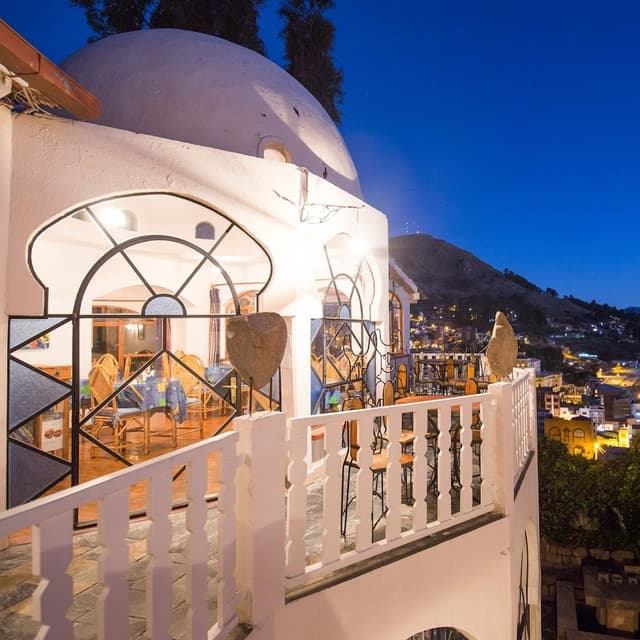
Stay overnight in Copacabana.
Day 2: Copacabana → Puno 🚐
Morning
If you want a local experience, some women sell breakfast sandwiches and coffee in the main square. They are inexpensive and get the job done. But I'm biased because I loved the little vibe in the main square and chatting with the lady making breakfast.
OR: if you want a bit of a more upscale breakfast with great baked goods. I highly recommend this spot in Copacabana:

Travel to Puno & Exploring the City
Transportation: Getting from Copacabana is quite easy and inexpensive if you want it to be. There are a ton of collectives from the main square of Copacabana that will take you to
Day 3: Peruvian Islands
Morning
High up on people's list is to visit the floating islands. There are options but homestays here, but I would highly recommend a Taquille homestay over Urus because you can get to know the local people even more.
Head to the port for a boat to Taquile Island. Usually, these boats will stop in Urus for the tourists who want to visit and then continue to Taquile.
Afternoon
Enjoy a delicious lunch on Taquile Island. We, of course, had to get the trucha.
Then take the 1.5hr boat ride back to Puno.
Night
Head back to Puno to enjoy a night out! OR take your overnight bus to Cusco or Arequipa!
Traveling to Arequipa next? Check out my food guide!
The home for unique & authentic travel


